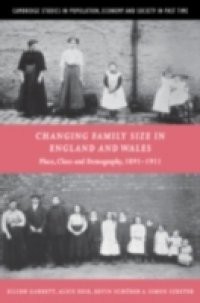This volume is an important study in demographic history. It draws on the individual returns from the 1891, 1901 and 1911 censuses of England and Wales, to which Garrett, Reid, Schurer and Szreter were permitted access ahead of scheduled release dates. Using the responses of the inhabitants of thirteen communities to the special questions included in the 1911 'fertility' census, they consider the interactions between the social, economic and physical environments in which people lived and their family-building experience and behaviour. Techniques and approaches based in demography, history and geography enable the authors to re-examine the declines in infant mortality and marital fertility which occurred at the turn of the twentieth century. Comparisons are drawn within and between white-collar, agricultural and industrial communities, and the analyses, conducted at both local and national level, lead to conclusions which challenge both contemporary and current orthodoxies.

